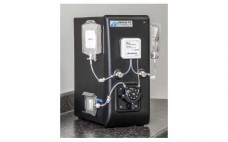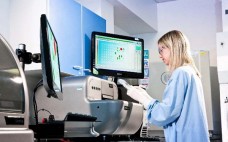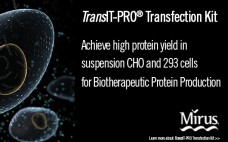A prerequisite for the successful manufacture of a biopharmaceutical in mammalian cells is a cell line development strategy that selects a cell line with the most desirable properties from a heterogeneous transfectant population. Desirable attributes include the stable, high expression of product with the appropriate critical product quality attributes rapidly, reproducibly and with relative ease. Obtaining a host cell line that inherently exhibits such desirable biomanufacturing attributes can therefore have a significantly positive effect on the identification of recombinant cell…
Upstream
Assessing Immunogenicity Using Ex Vivo T cell Assays
This article discusses Antitope’s developed highly sensitive ex vivo T cell assay technology that can detect T cell responses against T cell epitopes in therapeutic proteins. These assays can be used to select non-immunogenic lead proteins as well as support the optimisation of leads by engineering out T cell epitopes
Multitron Pro: The Professional Incubation Shaker for Any Application
The Multitron Pro and the Multitron Cell manage to combine flexibility, user-friendliness and operational reliability with  optimum space utilization. A number of innovative options for cooling, precise CO2 control, illumination and hygienic direct steam humidification guarantee the ideal conditions for cultures. With around 500 different designs we meet almost every customer requirement. We are also more than happy to provide special configurations. INFORS HT provides you with Swiss quality with a modern design and a high technological level and environmentally friendly energy…
Scalable Protein Production Using Flow Electroporation
Many transient gene expression (TGE) methods produce insufficient protein quantities for full use within biotherapeutic and vaccine development pipelines. MaxCyte’s proprietary flow electroporation provides a universal means of highly efficient TGE for the rapid production of large-scale quantities of proteins, antibodies, antibody-like molecules, virus-like particles (VLPs), and vaccines. In addition, the platform can be used for generation of stable pools and stable cell lines that can greatly streamline biotherapeutic and vaccine development. Flow electroporation (co)transfects a wide range of cells,…
Defining Non-Animal Derived Supplements for the Optimization of Mammalian Cell Culture Media Using DoE Methodologies
Optimization of chemically defined animal-derived component free media to culture mammalian cells and optimization of existing commercial media is possible with their supplementation with specific additives.
Flow Electroporation for Vaccine Development and Production: From Subunit Vaccines to Ex Vivo Immunotherapy
MaxCyte flow electroporation is a universal, clinically validated transient transfection platform for rapid, high-quality cell transfection in the development and production of vaccines and cellular immunotherapies.
Applying Disruptive Technologies in Mammalian Cell Line Development
Recombinant monoclonal antibodies (MAbs) maintain their ranking as the best-selling class of biologic drugs. The introduction of high titer bioprocessing for the majority of these MAb products has focused efforts towards maintaining desired quality attributes and reducing time to market. Furthermore, patents covering several blockbuster MAbs and the expression technologies, which facilitate their high-level expression, are due to expire over the next decade. A wave of second generation or “follow-on” biopharmaceuticals/bioprocesses will therefore be vying for market share and regulatory approval. Consequently, should biopharmaceutical manufacturing companies rely on traditional “platform” methods of cell line development (CLD), which are well known but yield extensive variation and unpredictable stability of expression, or invest in emerging technologies, which offer the potential of greater reproducibility and speed? Enabling technologies in this area include host cell engineering, engineered expression vectors, and rapid transient gene expression. Given the well-known mantra “the product is the process”, implementation of these disruptive technologies will require a thorough understanding of how changes at the CLD-phase affect key production process characteristics such as high cell-specific productivity, correct product processing and rapid cell proliferation. Traditionally, CLD optimisation is carried out using a lengthy trial-and-error approach where cells are treated as a “black box” and characteristics are iteratively improved. Further advancement in CLD is therefore likely to benefit from the tools of systems biology. These tools will ensure that future CLD manipulations will be informed by an understanding of the genetic, regulatory, and metabolic networks that determine key process characteristics during a production process.
Validation of the New Single-Use Freeze-Pak™STS Storage and Transport Solution Containers
Production of biotherapeutics whether for clinical development or large scale manufacturing campaigns intended to be converted to final drug product often involves frozen storage. Frozen storage provides manufacturing process flexibility while enabling long-term product stability. Products are frozen and stored using a variety of technologies including stainless steel vessels, bottles, carboys and single-use bags. Use of bags has become popular due to their low investment cost and process flexibility attributes. Single-use bags intended for freezing and storage are often made with films using EVA and/or LDPE with product routinely blast frozen and stored to -30°C in a cold storage warehouse. During freezing and transport, the bags will typically experience temperatures well below -30°C ranging from -50 to -80°C. Under these conditions, the bags have to endure a wide variety of stresses (film brittleness, volume expansion, etc.) impacting integrity. With applications (like working cell banks for example) requiring lower temperatures for maintenance of long-term product stability, frozen storage films and containers designed for these conditions are needed. The new single-use Freeze-Pak™STS (FP-STS) frozen storage and transport solution containers from Charter Medical, Ltd. are manufactured using a unique polyolefin monolayer film designed for freezing applications The FP-STS bags (including tubing and connectors) have been validated for storage to -80°C, while the Freeze-Pak™ film remains flexible to temperatures as low as -196°C. The new Freeze-Pak™ STS bags deliver the flexibility and durability required for frozen storage and transport.
E. coli Cultivation in a 12L and 120L CELL-tainer™ Single-Use Bioreactor
Single-use bioreactors are usually applied in the biopharmaceutical industry for mammalian cell culture processes. For microbial processes, concepts like the CELL-tainer® technology allow comparable gas-liquid mass transfer rates like in stirred tank reactors. In the CELL-tainer, the rocking motion of the bag is generated with a combination of a vertical and horizontal movement. Due to a 2-D rocking motion, the turbulence in the liquid is intensified. Thus, volumetric oxygen transfer rates (kLa) of over 400 h-1 could be achieved. Recently, the successful scale-up of an Escherichia coli nutrient-limited fed-batch cultivation from the 15 L to the 150 L scale in the CELL-tainer single-use bioreactor has been conducted. A final biomass concentration of 45 gL-1 within 24 hrs was obtained in cultivations proving the general suitability of this reactor concept for the application of bacterial processes. The combination of intelligent software sensor control strategies and currently improving (single-use) sensors will lead to a reduction of current drawbacks and improve control of bacterial fed-batch processes. The availability of single-use bioreactors for microbial cultivations widens their potential, not only in biopharmaceutical processing, but also as a pre-culture bioreactor for large scale processes and as a suitable tool in bioprocess development.
Selecting a Transfection Reagent for Large Scale Protein Production in Suspension 293 Cell Types
Decrease time to produce usable protein by maximizing target protein yields through transient transfection. The TransIT-PRO® Transfection Kit uses animal origin free components designed for high and reproducible nucleic acid delivery into suspension CHO and 293 derived cells. Since it is compatible with varied media formulations, the same media can be used for both transient and stable expression. The TransIT-PRO outperforms linear PEI in protein yield, while providing a cost-effective alternative to FreeStyle™ MAX and 293Fectin™ Transfection Reagents.









